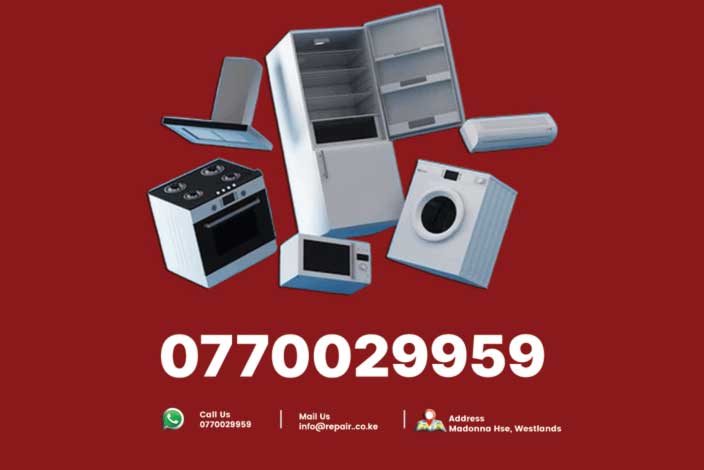Surround Sound System Calibration : Surround sound system calibration is a critical step in unlocking the full potential of home theater or audio setups, delivering immersive, high-quality sound tailored to the listener’s environment. By carefully adjusting speaker placement, levels, distances, and equalizer settings, calibration ensures that every sound element—from dialogue to ambient effects—is balanced and precise. In Nairobi, where home entertainment systems are increasingly popular, professional calibration services, such as those offered by RepairKE, provide expertise and advanced tools to achieve optimal audio performance. Whether for casual movie nights or professional audio applications, proper calibration transforms the listening experience, making it a worthwhile investment for any surround sound enthusiast.
In today’s era of advanced home entertainment, surround sound systems have become a cornerstone of immersive audio experiences, transforming living rooms into cinematic theaters. However, installing speakers alone is not enough to achieve the rich, balanced sound promised by systems like 5.1, 7.1, or Dolby Atmos setups. Calibration is essential to fine-tune the system to the room’s acoustics and the listener’s preferences. RepairKE, a leading provider of audio-visual solutions in Nairobi, specializes in surround sound system calibration, ensuring optimal performance for homes, offices, and entertainment venues. This article explores the importance of calibration, the process involved, and best practices for achieving superior audio quality.
Why Calibration is Essential
Surround sound systems rely on multiple speakers working in harmony to create a three-dimensional audio environment. Without calibration, factors such as room size, furniture, wall materials, and speaker placement can distort sound quality, leading to issues like:
- Uneven volume levels, where some speakers overpower others.
- Muffled dialogue or unclear sound effects.
- Inconsistent bass or treble, disrupting the audio balance.
- Poor spatial imaging, where sounds do not align with on-screen action.
Calibration addresses these challenges by tailoring the system to the specific room and listener position, ensuring that every channel delivers sound accurately. This is particularly important in Nairobi’s diverse settings, from compact apartments in Kilimani to spacious homes in Karen, where acoustic environments vary significantly.
The Calibration Process
Professional calibration, as performed by RepairKE, follows a structured process to optimize surround sound systems:
1. Room Assessment
Technicians evaluate the room’s acoustics, considering:
- Dimensions and shape, which affect sound reflection and echo.
- Surface materials (e.g., carpets vs. tiles) that absorb or reflect sound.
- Furniture placement, which can obstruct or enhance sound waves.
2. Speaker Placement
Correct speaker positioning is critical:
- Front Speakers: Placed at ear level, angled toward the listening area for clear dialogue and music.
- Surround Speakers: Positioned slightly above ear level to create an enveloping sound field.
- Subwoofer: Placed to avoid excessive bass boom, often in a corner or along a wall.
- Height Channels (for Dolby Atmos): Mounted on the ceiling or angled upward for overhead effects.
3. System Configuration
Using the receiver’s calibration tools or external devices, technicians adjust:
- Speaker Levels: Balancing volume across all channels to ensure uniformity.
- Distances: Setting the delay for each speaker based on its distance from the listener, ensuring synchronized sound arrival.
- Crossover Settings: Dividing frequencies between speakers and the subwoofer for seamless transitions.
4. Equalization
Advanced calibration systems, like Audyssey or Dirac, analyze room acoustics and apply equalizer settings to:
- Reduce peaks caused by room reflections.
- Enhance clarity for dialogue and effects.
- Smooth out bass response for consistent low frequencies.
5. Testing and Fine-Tuning
The system is tested with audio tracks or movies to verify:
- Spatial accuracy, where sounds move realistically across channels.
- Balanced dynamics, ensuring no speaker dominates.
- Clear dialogue and impactful bass.
6. Client Guidance
Technicians provide tips on maintaining optimal settings and adjusting for different content, such as music versus movies.
Benefits of Professional Calibration
Professional calibration offers several advantages:
- Precision: Advanced tools like sound level meters and calibration microphones ensure accuracy beyond manual adjustments.
- Time Savings: Experts complete the process efficiently, avoiding trial-and-error.
- Customized Results: Calibration accounts for the room’s unique acoustics and client preferences.
- Enhanced Experience: A calibrated system delivers cinematic sound, elevating movies, gaming, and music.
In Nairobi, where power fluctuations and environmental factors like dust can affect electronics, professional services ensure systems remain reliable.
DIY vs. Professional Calibration
While many receivers include auto-calibration features, DIY efforts often fall short due to:
- Limited expertise in speaker placement and room acoustics.
- Basic microphones that miss subtle distortions.
- Inability to address complex issues like standing waves or bass nulls.
Professional services, like those from RepairKE, use high-end equipment and expertise to achieve superior results, making them ideal for high-value systems or critical listening environments.
Best Practices for Maintenance
To sustain calibration quality:
- Avoid moving speakers or furniture, which alters acoustics.
- Clean speakers and receivers to prevent dust buildup, common in Nairobi.
- Re-calibrate after significant room changes, like renovations.
- Schedule annual checkups with professionals to maintain performance.






